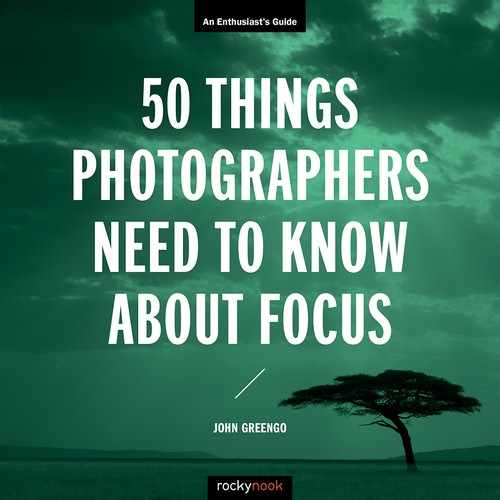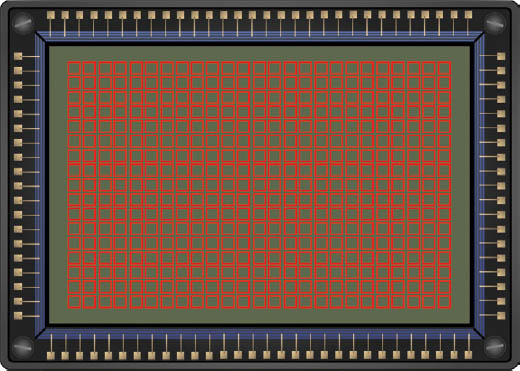11. MIRRORLESS FOCUS AREA
![]()
ONE OF THE biggest advantages of autofocus in a mirrorless camera is the frame-filling area of available focus points. Mirrorless cameras allow you to choose a focus area of almost any size and in almost any location within the frame (Figure 11.1).
In a DSLR, the technology used for focusing was limited to a specific-sized focus point, a limited number of points available, and all within a limited coverage area. The first autofocus SLR cameras offered only a single point of focus in the center of the frame. As the technology progressed, more points were added. A common complaint on many DSLRs was that all the focus points were clustered in the middle of the frame, which made it difficult for off-center focusing.
Most every mirrorless camera offers a large focus area that will cover between 60% and 90% of the entire frame. While cameras may vary in the total coverage area, all are excellent and the difference between them likely won’t be noticeable to most.
This vast in-focus area is possible because the contrast detection system uses the same pixels that are being used to capture the image. An important exception is that some mirrorless cameras have a wide area of coverage for contrast detection, but a smaller area where hybrid phase detection is employed. For some of the earlier mirrorless or more basic models, the phase detection sensors were only grouped in a limited area in the middle of the frame. Those cameras with a limited phase detection area were best at tracking action when the moving subject was within that area.
Another advantage of this type of system, beyond the large area of coverage, is the seamless selection over the entire area. DSLRs have pre-set focus points with gaps between them. If you are very specific about the point you want, you may have to compromise your composition to get your AF point to land where you want in the frame. With mirrorless cameras, there are no gaps.
A slight downside to endless coverage is that the high number of focusing points can be cumbersome to navigate. The dedicated joystick or 4-way controller (up, down, left, right) is the fastest way to move the selected point around. If you hold it in the desired direction it should move quickly in that direction. Some cameras have a 4-way controller but the default programing is for each press to activate a particular camera feature. Many cameras will allow you to change these buttons so that the 4-way controller is dedicated to focus point navigation. Check your user’s manual to see if your camera will allow for this.
To further speed up the process, some cameras also offer the ability to “wrap” around from the far right to the far left with a single click to the right. Finally, some cameras even allow customization to reduce the number of selectable focus points, making the selection process quicker.
The larger coverage area with a mirrorless camera can be a big benefit when shooting action that is hard to track. The increased focus area will give you a lot of leeway for camera or subject movement when tracking the moving subject. To help follow the action, many cameras will indicate which focus boxes or areas are tracking the action with colored boxes.
11.1 One of the great advantages of most mirrorless cameras is the coverage area of the focus system. On many systems, it covers almost the entire image area.

